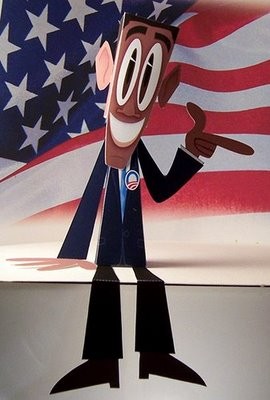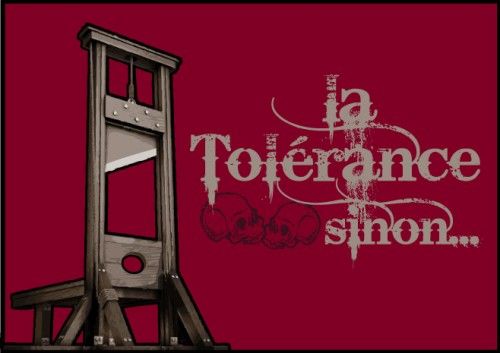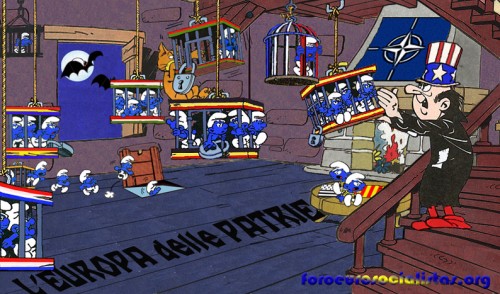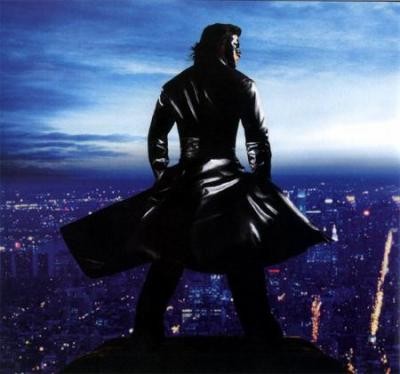Andreas FAUST
Ex: http://www.counter-currents.com/
 This article has been researched and compiled for the purposes of educating New Right and N-A activists in the use of humor as a political weapon. There is a paranoid feeling amongst many on the New Right that the mass media is our greatest enemy. Not so. This article looks at the ways in which activists can use and manipulate the media, rather than the other way around.
This article has been researched and compiled for the purposes of educating New Right and N-A activists in the use of humor as a political weapon. There is a paranoid feeling amongst many on the New Right that the mass media is our greatest enemy. Not so. This article looks at the ways in which activists can use and manipulate the media, rather than the other way around.
As an example: mention the 1932 opening of the Sydney Harbour Bridge to any older Australian, and the first image that will spring to their mind is a man on horseback, galloping forward to slash the ribbon with his sword, before the ‘official’ representative could get to it. The swordsman was a member of a political group called the New Guard. And while this stunt was not especially humorous, it was certainly eye-catching – it remains in the mass mind to this day. In that same city in 2007, the crew of television show The Chaser made world headlines when they infiltrated the APEC forum (one of them dressed as Osama bin Laden), making a complete mockery of the forum’s expensive security measures.
In general, the media doesn’t give coverage to alternative politics (the recent 9/11 Truth Forum in Sydney was completely ignored, even though one of the speakers was a prominent Japanese MP). But ‘fringe’ views can get past the editors if they are presented by means of some humorous prank or stunt. Humor equals saleability . . . it’s as simple as that. People like to laugh, and the editors know it. For the mass media, the dollar is the bottom line . . . and the skilled prankster can actually make this work in his or her favor. A prankster called Mark Pauline claimed that “the media can never deny coverage to a good spectacle. No matter how ridiculous, absurd, insane or illogical something is, if it achieves a certain identity as a spectacle, the media has to deal with it.” In other words, instead of letting the mainstream media pigeonhole and stereotype them, activists using humor and spectacle can turn this around and actually use the media.
This was confirmed by a spokesman for the environmental group EarthFirst!: “The media need stories – they want to run them, especially the television media. What they don’t want is some meeting or run-of-the-mill visual situation they’ve seen a million times before. You give them something different and they actually get excited about working on the story.” Perhaps (shock horror!) it might even lead to greater accuracy in their reporting.
Humor also wins favor with the common man in the street. Stridency and self-righteousness turn people off – but humor can get them on side. It’s considered ‘cute’, and could even help you attract the opposite sex. As punk singer Jello Biafra said, “historically the ‘Merry Prankster’ has had a lot more to look forward to than the humorless politico who sits around moaning about ‘the struggle’.” And trickster characters have a rich history in mythology and literature.
Targets for political pranks are rife – for instance, the legions of pseudo-left academics who condemn ‘privilege’ and praise ‘globalism’ whilst making over $100,000 a year. The obnoxious billboards of Benettons are just begging to be creatively altered, as are posters for phoney humanitarians such as the rock group U2. I remember seeing footage of U2 on the news a few years ago when they were touring Australia. Bono, the singer, was here to lecture people about giving more money to Africa. Then the cameras showed the band members leaving the airport – in four separate limousines! One limo just wasn’t enough. For the cost of a stretch limo you could probably feed an African village for twenty years. The band are currently engaged in trying to build a skyscraper in Dublin – an act of cultural vandalism if there ever was one.
U2 have already been the target of an amusing prank in the past. A band called Negativeland put out a CD entitled ‘U2′, with the name prominently featured on the cover so people would think it was a U2 album. When people took it home and put it on, they found it was a recording of someone insulting and attacking U2! The bloated multi-millionaires failed to see the funny side and (predictably) sued Negativeland.
A punk band called CRASS (posing as Creative Recording and Sound Services) managed to get some tacky music (with subversive lyrics) inserted as a flexidisc into a bestselling teenage bride magazine. CRASS also leaked a faked conversation between Margaret Thatcher and Ronald Reagan discussing the possibilities of launching a nuclear war. The conversation was spliced together from radio and TV statements, but was taken seriously by the media and caused an uproar.
When the US Forestry Service (responsible for a lot of old growth logging) put on a ‘Smokey the Bear’ birthday party for 300 children, an EarthFirst! activist hired a Smokey the Bear costume and walked through the crowd handing out anti-logging flyers. The kids were treated to the bizarre spectacle of the rangers trying to arrest Smokey at his own birthday! This made front page headlines the next day.
A media prankster called Joey Skaggs tricked a room full of journalists and news readers (including some famous ones) into getting down on their hands and knees and roaring like lions. He simply issued fake press releases, pretending to be a trendy new therapist called ‘Baba Wa Simba’ (the Lion King), and the journalists fell for it hook, line and sinker. The journalists were induced to take part in ‘roaring sessions’, which many reported on positively afterwards. People can be fooled into believing almost anything if it’s seen to emanate from some ‘official’ quarter. There are no end to the ways in which consensus reality can be manipulated.
Websites are also fair game. A musician from a band called Feederz once set up a site parodying CNN. To add authenticity, when someone clicked on the masthead they would be taken back to the real CNN site. As a result, some of his fake stories actually found their way into mainstream papers. It was seriously reported that Saddam Hussein was training suicide camels, and that he had plans to blow up Pearl Harbour!
A group called the Yes Men set up a fake website for Dow Chemical. On the anniversary of the Bhopal disaster (where thousands were killed by chemical contamination in Bhopal, India) they were contacted by the BBC (who thought they were genuine representatives of Dow), and proceeded to give a statement saying that Dow claimed responsibility for the disaster and were now going to do something about it. Because of this the real Dow was embarrassed into cleaning up the mess.
A group called the Cacophony Society once held a fake welcoming party for a new Starbucks, which seemed to praise Starbucks while actually ridiculing everything they stood for. A member of the group spoke of the successful nature of this strategy “where you pretend to side with the thing you really hate. It makes it hard for the subject of the protest to get rid of you.” Similarly, the aforementioned Yes Men have done speaking tours claiming to represent the World Trade Organisation. Taking WTO logic to its ultimate conclusion, they delivered lectures with messages like ’sweatshops are great’. The same tactic could easily be employed by nationalists or National-Anarchists. For instance, a nationalist posing as a pro-multiculturalist could get invited onto a public forum, and then give a speech saying that “multiculturalism is great, because it causes social alienation and helps advance our ideal of a rootless global population, more easily herded into line…”
Obnoxious advertising billboards are excellent targets for humorous or creative political statements. A group called the Billboard Liberation Front, established in 1977, have published a handy guide for billboard alteration at: http://www.billboardliberation.com/guidebook.html When doing a prank like this in an area with surveillance cameras, it might be an idea for the prankster to wear some kind of ridiculous disguise.
Pranks can also be played on establishment politicians. Once when Richard Nixon was giving a speech from a stationary train, someone put on a conductor’s cap and waved the train out of the station with Nixon still in mid-speech. A Texas politician called Tim Moore highlighted the way in which representatives often pass bills without even understanding the content, by convincing his fellow pollies to pass a motion commending one Albert de Salvo (actually the Boston Strangler).
Pranksters can even run for office. Local elections are easy to run in, and candidates with a humorous platform often attract a protest vote from those who are sick of the lies of the mainstream candidates. When Jello Biafra ran for mayor of San Francisco, one of his policies required all corporate businessmen to wear clown suits between the hours of nine and five. He finished fourth out of ten candidates – quite a respectable result.
The contemporary art world is also ripe for satire. Australia has a well-known history of literary pranks, including the Ern Malley hoax, where two writers created a fictitious modernist ‘poet’ to expose what they saw (rightly or wrongly) as the shallow nature of literary modernism. Another one was the Wanda Koolmatrie hoax, where a writer called Leon Carmen posed as an aboriginal woman in order to get his book published, thereby illustrating the biases inherent in the publishing industry.
In Austria, a group of artists who wanted to expose the pretensions of the art world created a non-existent writer called Georg Paul Thomann, and it actually worked. Newspaper articles were written about him because he was perceived to be a ’somebody’ . . . even though he was fictional and his work was non-existent! This fake ‘artist’ was even chosen to represent Austria at a world art fair.
An artist called Jeffrey Vallance couldn’t get a major gallery to show his work, so he bought a number of power point wall sockets from the hardware shop, and covered them with his art. Then he went around the art gallery in a tradesman’s outfit and replaced all the wall sockets with his own ones. Next he printed up programs, and invited his friends to view his work on the art gallery wall sockets. He sent a program to the art gallery itself – and they were so shocked they didn’t do anything about it. The employees hushed it up, in case they got in trouble! The wall sockets weren’t removed, and it was only two years later that they were finally painted over.
Schwaller de Lubicz defined magic as “the science of the right gesture, the right word, at the right moment.” That is what a successful prank is – an act of magic. I hope this short article has provided suggestive ideas for anti-global activists of all stripes, whether National-Anarchist or otherwise.
Hail to the clowns.
Source: http://newrightausnz.blogspot.com/2008/05/humour-as-weapo...
 Le satiriste allemand Jan Böhmermann (photos) avait, lors d’une émission diffusée par la chaîne publique ZDF-neo, traité le président turc de pédophile et de zoophile. Ankara exige à présent que des poursuites pénales soient engagées contre le comédien.
Le satiriste allemand Jan Böhmermann (photos) avait, lors d’une émission diffusée par la chaîne publique ZDF-neo, traité le président turc de pédophile et de zoophile. Ankara exige à présent que des poursuites pénales soient engagées contre le comédien.



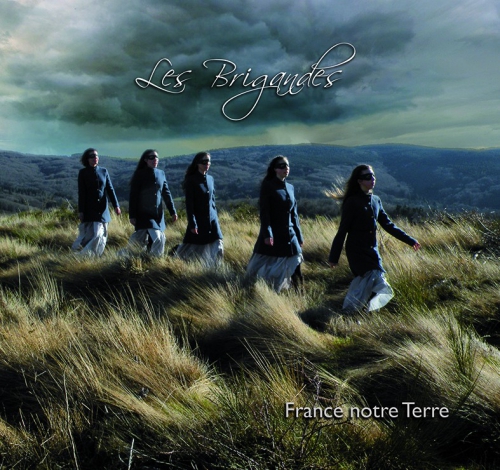

 del.icio.us
del.icio.us
 Digg
Digg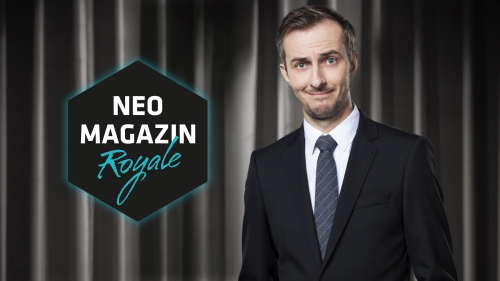



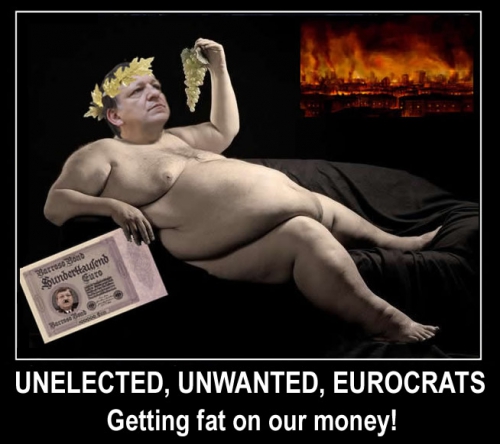
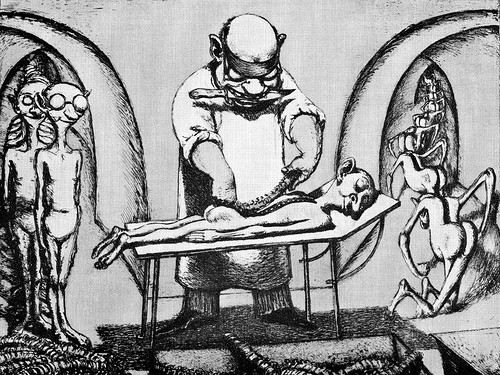
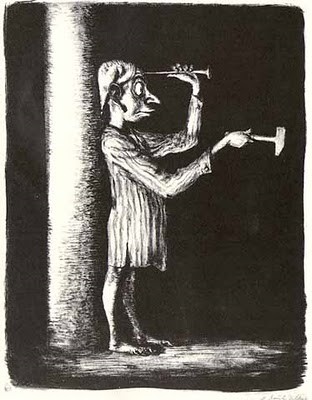 Zusammen mit
Zusammen mit 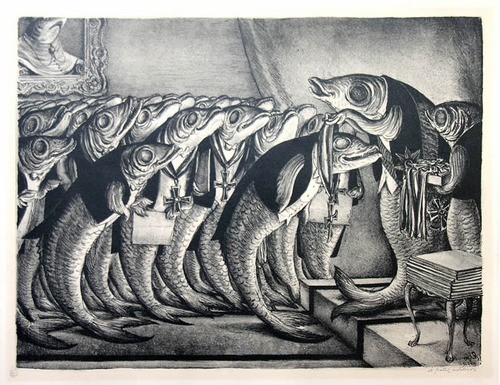
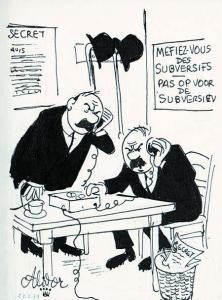 L’un des derniers numéros du journal satirique bruxellois “Père Ubu/Pan” (11 août 2011) comprenait un encart fort intéressant: quatre pages consacrées à Paul Jamin (1911-1995), qui fut, pendant de longues décennies, le principal caricaturiste de “Pan” d’abord, de “Père Ubu” ensuite. Aujourd’hui les deux feuilles ont fusionné pour devenir “Ubu/Pan”, le seul hebdomadaire satirique de droite en Belgique francophone (et les critiques acerbes de cette feuille disent qu’elle est “islamophobe”). Paul Jamin a été indubitablement l’un des meilleurs caricaturiste dans la Belgique d’après guerre.
L’un des derniers numéros du journal satirique bruxellois “Père Ubu/Pan” (11 août 2011) comprenait un encart fort intéressant: quatre pages consacrées à Paul Jamin (1911-1995), qui fut, pendant de longues décennies, le principal caricaturiste de “Pan” d’abord, de “Père Ubu” ensuite. Aujourd’hui les deux feuilles ont fusionné pour devenir “Ubu/Pan”, le seul hebdomadaire satirique de droite en Belgique francophone (et les critiques acerbes de cette feuille disent qu’elle est “islamophobe”). Paul Jamin a été indubitablement l’un des meilleurs caricaturiste dans la Belgique d’après guerre. This article has been researched and compiled for the purposes of educating New Right and N-A activists in the use of humor as a political weapon. There is a paranoid feeling amongst many on the New Right that the mass media is our greatest enemy. Not so. This article looks at the ways in which activists can use and manipulate the media, rather than the other way around.
This article has been researched and compiled for the purposes of educating New Right and N-A activists in the use of humor as a political weapon. There is a paranoid feeling amongst many on the New Right that the mass media is our greatest enemy. Not so. This article looks at the ways in which activists can use and manipulate the media, rather than the other way around.